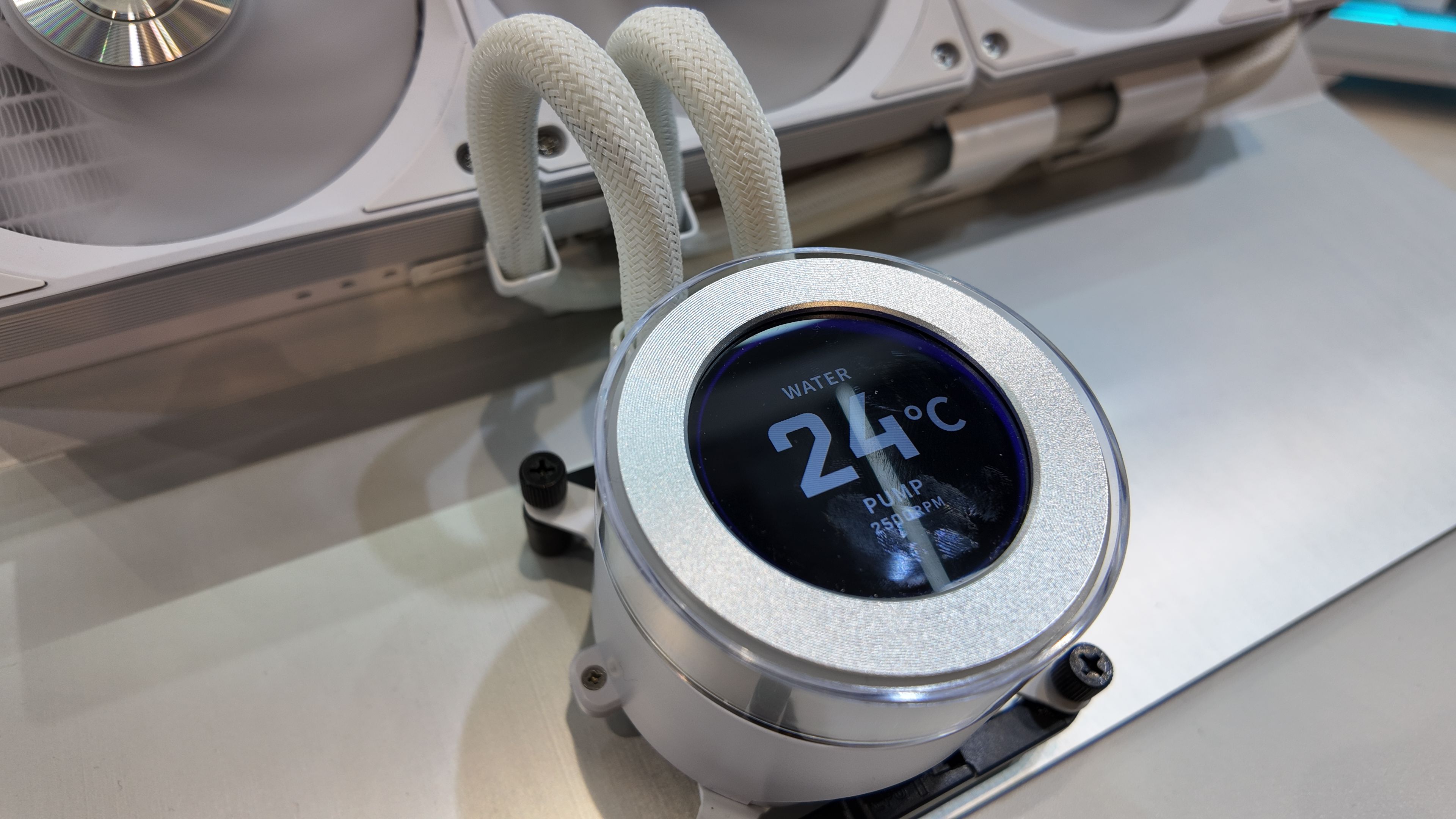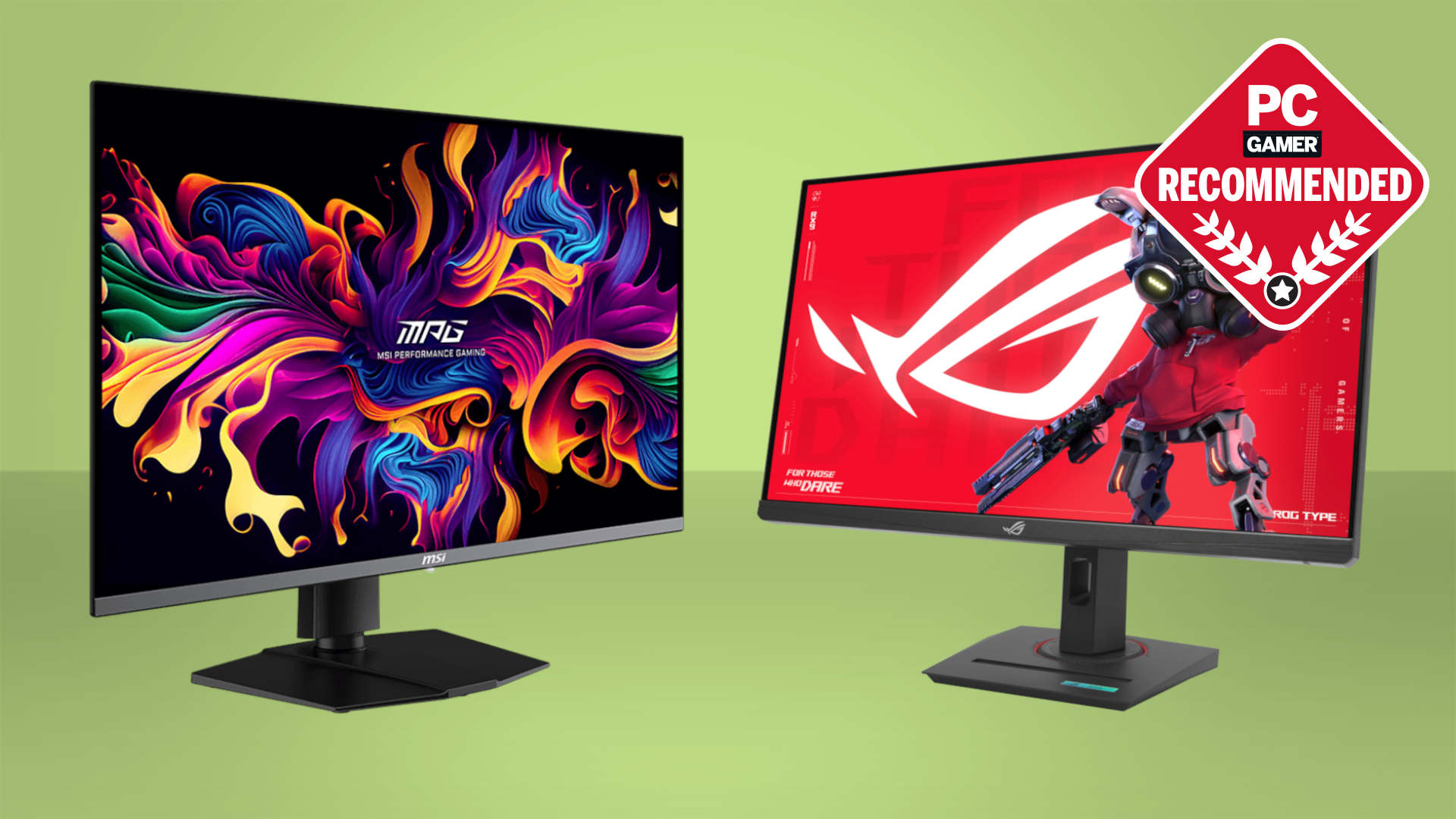Lian Li's new Hydroshift AIO cooler doesn't work properly on some motherboards but it will send you a replacement part if you can't get around the issue in the BIOS
The key detail here is that not all motherboard fan headers are the same.

At this year's Computex event, cooler manufacturers went somewhat overboard with new models touting all kinds of flashy new features. Curved screens, rotating screens, tablet-sized screens, even screens doubling as a figurette display. With its new Hydroshift II LCD-C cooler, Lian Li wanted to keep things a little simpler, but it's turned out that for some people, it just won't work properly because it can't get enough power from the motherboard fan header.
Lian Li has directly addressed the problem on its support page for the Hydroshift II LCD-C AIO liquid cooler: "In certain setups, the screen’s USB connection may not be recognized by L-Connect 3 or Device Manager when connected to specific motherboard models. After thorough investigation, we found that this issue is caused by insufficient power delivery from certain CPU_FAN PWM headers."
It goes on to say why the power delivery aspect of a motherboard's fan header is so important in this instance. "The HydroShift II LCD-C 360 draws power for the pump, screen, MCU, and RGB directly from the motherboard PWM header. Due to differences in motherboard design and default BIOS settings, some headers may not provide adequate or stable power."
The stated solution is to set the fan header being used (and one should be using a CPU or AIO header, rather than a chassis one) to run in PWM or DC mode, rather than Auto, and ideally also have it set to 100% fan RPM.
Should you not be able to do this because you have a prebuilt PC that offers limited BIOS options or you feel that you just shouldn't need to do this just to use an AIO cooler, then Lian Li will issue a circuit board replacement for the Hydroshift LCD-C that has a correct resistor, to allow it to operate properly. Just how easy it will be to swap over the PCBs is another matter entirely, though.

As annoying as the problem might seem, Lian Li does deserve some credit for trying to reduce the number of cables that festoon many AIO coolers. The idea with the Hydroshift is that you can detach its included USB header cable and just use one cable, with two PWM headers, to power the pump, fans, RGB lights, and display.
Not only does this make the whole unit look a lot cleaner inside your gaming PC, but it also makes it considerably easier and quicker to install. Compared to some AIO cooler models (cue a Paddington bear stare at a few of Corsair's), it's really great to be able to just whack on the cooler, plug one cable in, and you're good to go. Arctic's Liquid Freezer III is one such example, though it's not so easy to just whack onto the motherboard.
Keep up to date with the most important stories and the best deals, as picked by the PC Gamer team.
It's not clear just how many Hydroshift II LCD-C users reported the header problem to Lian Li, so I can't determine just how much of a boo-boo the manufacturer has made here, but at least they've addressed the issue quickly enough.
Best AIO cooler for CPUs: Keep your chip chill.
Best air cooler for CPUs: Classic, quiet cooling.
Best PC fans: Quiet and efficient.

Nick, gaming, and computers all first met in the early 1980s. After leaving university, he became a physics and IT teacher and started writing about tech in the late 1990s. That resulted in him working with MadOnion to write the help files for 3DMark and PCMark. After a short stint working at Beyond3D.com, Nick joined Futuremark (MadOnion rebranded) full-time, as editor-in-chief for its PC gaming section, YouGamers. After the site shutdown, he became an engineering and computing lecturer for many years, but missed the writing bug. Cue four years at TechSpot.com covering everything and anything to do with tech and PCs. He freely admits to being far too obsessed with GPUs and open-world grindy RPGs, but who isn't these days?
You must confirm your public display name before commenting
Please logout and then login again, you will then be prompted to enter your display name.


